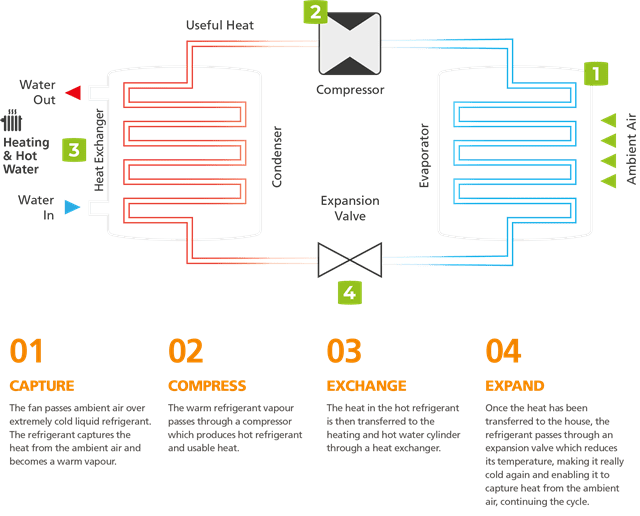
The ‘Heat and Buildings Strategy’, launched in October 2021 is the UK government's plan to decarbonise virtually all heat in buildings and is fundamental to the Net Zero goal. At the heart of this strategy is phasing out the use of fossil fuels to heat buildings by 2035, whilst increasing the application of low-carbon products, fuels, and energy sources.
As part of this drive, heat pump technology is already being used successfully in many commercial buildings, helping sites to reduce their carbon emissions by more than a third. However, to maximize energy efficiency, certain key aspects need to be considered.
Heat pumps aren’t simply designed to take a building from cold to warm as quickly as possible. Instead, they gently heat the fabric of the building and then continue to provide warmth at the same rate as it is lost. However, for this to work efficiently, the thermal efficiency of a building needs to be addressed.
To determine the energy efficiency of a building, design, and materials play a fundamental role. The more thermally efficient the building, the more energy efficient it will be. Therefore, thought needs to be given to all aspects of building fabric, including insulation, glazing, etc.
Looking beyond this, building services should also be looked at as this will determine if the existing heating system is fit for purpose when it comes to running efficiently with a heat pump. Key to the success of a heat pump-based heating system is the ability of the building’s heating system to be able to operate at lower temperatures. That means correctly sized radiators. As the temperature running through the radiators is lower than that provided by a gas boiler, radiators must be of a size and nature that provides ample opportunity to deliver heat in that area.
Here, whilst the ‘Heat and Buildings Strategy’ sets out the ambition, the uplift of Building Regulations’ ‘Conservation of fuel and power: Approved Document L’, introduced in December 2021 and in force as of June 2022, is the legislative method adopted to ensure new buildings will be fitted with low-carbon heating and high levels of energy efficiency achieved, targeting on average a 27% decrease in CO2.
When it comes to heat pumps, there is no silver bullet solution. Accurate control of any heating appliance is crucial to efficient operation, so ensuring a heat pump is correctly sized to meet the correct load requirements of the building is an important factor. To achieve this, the thermal efficiency of all the areas to be heated – including aspects such as window sizes and the building’s materials – needs to be measured and calculated. Bigger doesn’t mean better, as oversizing a heat pump will make it less efficient.
Determining location is also another important factor when it comes to maximizing the performance of a heat pump. As heat pumps require external airflow to function, units are commonly installed externally at ground level or on a roof depending on the building type, but the key requirement is adequate clearances to ensure good airflow.
Finally, as with all heating systems, understanding a building and its usage is paramount. This then needs to be translated into a good control strategy for maximum energy efficiency.
Going forward, when it comes to reducing the carbon impact of buildings, heating must be an area of focus. With around 40% of emissions coming from heating alone, the road to net zero is a great opportunity to invest in lower-carbon building services technologies and future-proof commercial buildings for years to come.
Hamworthy Heating is a long-term member of the CIBSE Patrons programme. Following its commitment, the trusted expert is dedicated to staying up to date with the latest industry developments and is excited to launch its new Heat Pump CPD in the coming months. For more information about how Hamworthy is supporting the industry in the drive to net zero, visit: www.hamworthy-heating.com
Blog is written by Hamworthy Heating
